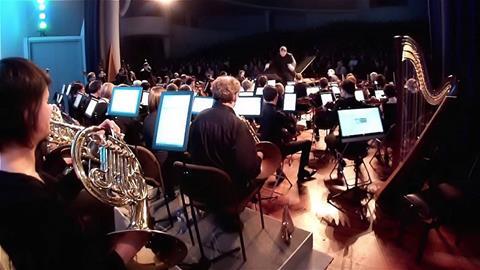As consumers hunger for the latest fads, should string teachers embrace ‘the new’ as well? For Philippa Bunting, today’s innovations are inseparable from the old reliables

New Year, New Beginnings. Resolutions, anybody?
What would ‘new’ be in relation to string teaching, I wonder? A pedagogical idea? A piece of repertoire or teaching resource? An accessory? A website? Would I find it sitting on a shelf in a music or book shop? Or overhear it in a conversation between colleagues? Could I find it at a masterclass or concert? Learn it on a course?
And what would be the reason, ultimately, to seek that something new, and change? I guess at the root of it would be either an unsolved problem or an unrealised ambition – for our pupils, naturally. Either something we are doing simply doesn’t work, with visible or audible results for our pupils’ playing. Or it doesn’t work quickly or efficiently enough so our pupils don’t progress as well as we would like. Something the external world can see and hear. Including the parents.
But change is not always the easiest of forces to harness. After all, we built a teaching practice on a set of relatively confident certainties: we laid out our stall, our credentials, and people came to us knowing to some extent what to expect. They don’t necessarily want the latest from us, just the best.
String teachers can be perceived as having a somewhat uneasy relationship with the new. We pursue what is at heart a supremely old-fashioned craft attached, if we teach mainly classical music, to a discrete historical period and a particular strand of contemporary artistic endeavour. We like our model of one-to-one teaching, our traceable pedigrees, schools of influence, our 19th-century books of studies and scale manuals. We also, in many cases, persist in preferring antique instruments. ‘New’ is not, it would seem, an unambiguously positive word.
In a seminar given by memory expert Tony Buzan, I once saw an extraordinary film of a brain cell. This little frond fairly flew across the screen, intelligently looking for a connection. When it found the correct synapse, it fired rapidly back and forward, hardwiring it. The energy was incredible, and also the beauty. It firmly impressed on me how careful we have to be that the wrong connections don’t get made, since they all hardwire in the same way. A tense bow hold beds in just the same as a new word, or a liking for blue, in the voracious brain. More positively, it also taught me that there are always new connections we can make, powerful links that help us integrate learning for our pupils: the technical with the musical, the physical with the aural, and the personal with the artistic.
One way of pretty much guaranteeing ‘new’-ness would be to harness the extraordinary power of modern technology. What could I do there? Go to one of the many information sites providing support for teachers and learners? Order one of the many online or actual accessories, such as a tuner, a bow hold aid, or a metronome app for my iPhone? Find a teacher, take a course, create my own music using sequencing software, join an online community of like-minded learners or teachers? Settle down for a YouTube or Spotify session to do some research into repertoire and different performance styles?
But as a pupil I would still need help in developing an inner compass to steer by, and learning to be confident in reaching my own conclusions based on that research. And there are certainly no shortcuts to learning to play an instrument well, thoroughly, and with integrity. I can’t go onto the internet and download a responsive and subtle vibrato, nor can I ask it to suggest suitable articulations for a nuanced performance of classical repertoire and then tell me how best to achieve them.
But 'new' is important: remember its excitement, its sense of empowerment. And I think we all do it instinctively. Every time a new pupil brings us a challenge, every time we talk to colleagues, every time we meet a new piece of repertoire. As self-help author Alan H. Cohen says, ‘It takes a lot of courage to release the familiar and seemingly secure, to embrace the new. But there is no security in what is no longer meaningful. There is more security in the adventurous and exciting, for in movement there is life, and in change there is power.’
Finally, let me wish you a Happy New Year! And happy teaching!








































No comments yet